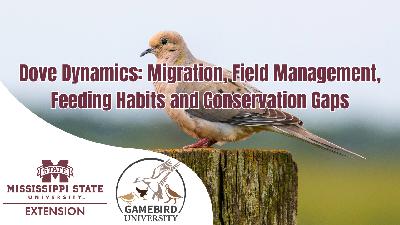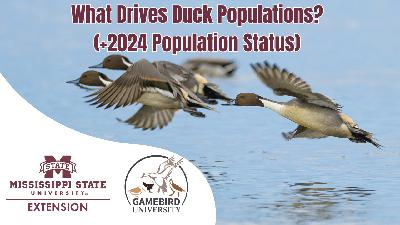From Data to Drawdowns: Telemetry and Winter Ducks—Signals, Noise, and Habitat Strategy
Description
In this episode of Gamebird University, James sits down with Dr. Ryan Askren, Director of the Five Oaks Agricultural Research & Education Center, to refocus the lens on the wintering grounds—where habitat configuration, disturbance, and management decisions shape duck behavior long before spring.
James and Ryan dig into what modern GPS/GSM telemetry is really telling us about winter movements, night feeding, and sanctuary use—and where tag choice can bias migration inferences. They explore how wetland complexes outperform single units, why scrub-shrub/buttonbush cover may be undervalued for thermal refuge and predator avoidance, and what fecal DNA diet work reveals.
The conversation connects science to practice: post-season water on non-timber units, hunt-rest rotations, and coordinating with neighbors to create the mosaic ducks actually select. Ryan also shares insights from comparative studies of backpack vs. implant transmitters (and what that means for estimating timing and survival) and closes with how the Five Oaks certificate program turns ecology-savvy students into equipment-ready managers who can calibrate sprayers, plan drawdowns, and talk shop with farmers.







